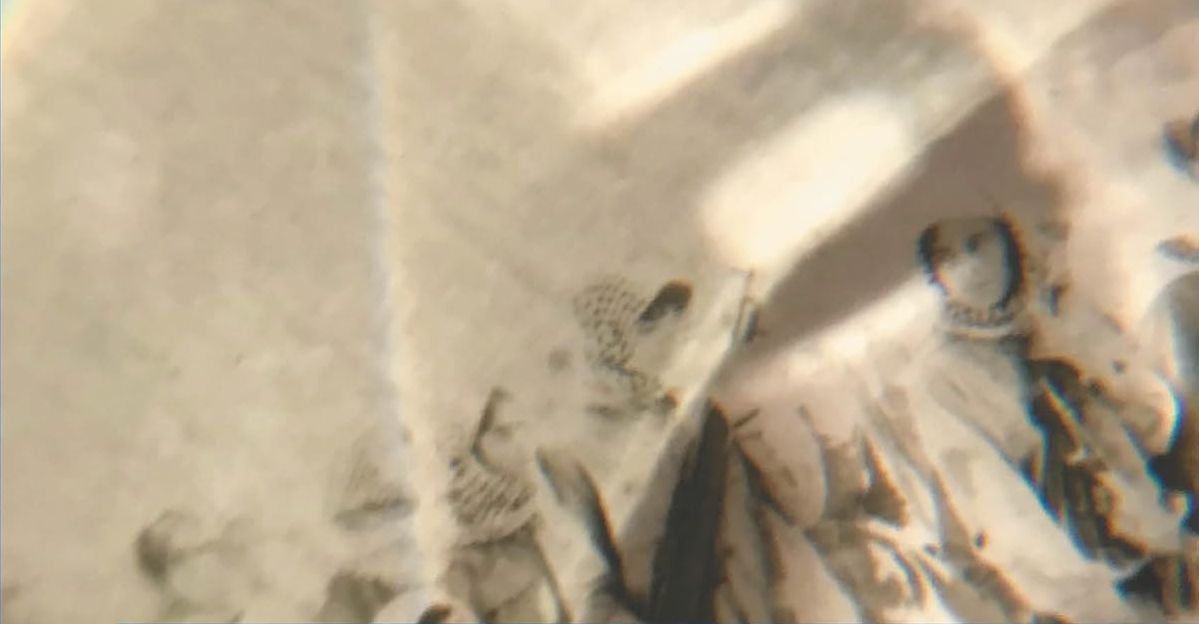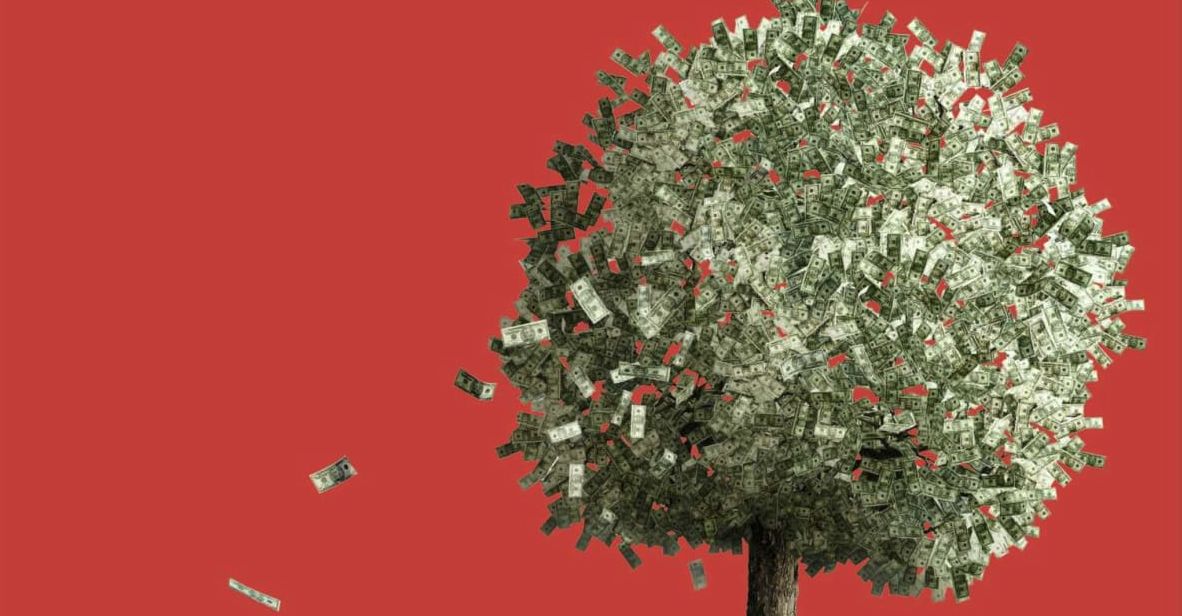Visiting MONA (Hobart’s privately funded Museum for Old and New Art) for the first time in late 2015 I was struck by its reactionary undercurrent. Everywhere I turned, it seemed to drag down the art museum’s much-vaunted trangressiveness. There were the Os, iPod-like devices offering founder David Walsh’s blokey commentary on the art. Walsh had conceived MONA as a ‘subversive Disneyland’ but I found its collection – based around the theme ‘sex and death’ – to reflect the worldview of an adolescent male, its approach to these subjects sniggering and prurient rather than illuminatingly disruptive.
On Mona Roma, the military-style catamaran that transports visitors to the museum from Hobart, you can, for $55 one way, sit in the ‘Posh Pit’ and ‘enjoy complimentary drinks and canapés in [the] exclusive lounge, bar, and private deck.’ (I later discovered that the experience is ironised by mildly abusive graffiti directed at the Pit’s VIP clientele, but so what? All the time I was at MONA I was reminded of David Foster Wallace’s rejection of institutionalised irony as ‘not liberating but enfeebling’.) And finally, there, in the car park, were adjoining spaces reserved for Walsh and his wife, Kirsha Kaechele, emblazoned with the faintly sexist appellations ‘God’ and ‘God’s mistress’. It all seemed less a destabilisation of the art world’s old hierarchies than a reinscription of them in different clothes.
Summing up MONA’s disjunction, the Irish artist Fergal McCarthy writes:
It’s interesting that a museum with such a racy reputation seems to have such a broad audience. On my recent visit, it was sprinkled generously with silver-haired Australian couples who were enraptured by the mesmerising space and seemingly unfazed by walls of vulvas and chocolate sculptures of suicide bombers.
Walsh’s curatorial decisions, however, are sometimes capable of disconcerting the public – even, occasionally, before anybody has seen the work in question. Such has been the case with Austrian-born performance artist Hermann Nitsch’s 150.Action, recently announced as a key event of this year’s Dark Mofo, MONA’s midwinter festival. In the work, participants ritualistically interact with a bull carcass, becoming progressively mired in blood (about 500 litres’ worth) and entrails. A storm of criticism followed the programming of the work, culminating this week in the delivery of an Animal Liberation Tasmania petition – signed by upwards of 19,000 people, including Hobart Lord Mayor Sue Hickey – to the Hobart City Council. The petition has triggered an official report that may influence the Tasmanian State Government, owner of the land the work is scheduled to take place on in June, to stop the event. Further controversy ensued when David Walsh, responding – typically discursively – to the criticism on his blog, wrote that people who visited Auschwitz were ‘creepy fucks’ (he has since apologised for the remark).
The use of animals in performance art is nothing new. Nitsch himself has been performing iterations of 150.Action since the 1960s, the heyday of the short-lived but influential Viennese Actionist movement, whose works were grounded in nakedness, violence and destruction, and which often breached obscenity laws and provoked widespread moral outrage. Recent examples are just as easy to point at, from Damien Hirst’s liberal deployment of dead animals – nearly as many as a million, according to one calculation – to notorious encounters with fish (Marco Evarsitti’s Helena), chickens (Amber Hansen’s proposed Story of Chickens), and dogs (Guillermo ‘Habacuc’ Vargas’ Exposition No. 1).
What most of these works have in common, beyond their foregrounding of animal bodies, is their conceptualisation as critiques of our relationship to other species. In Helena, Evarsitti provocatively literalised our legal – if not moral – dominion over animals by placing live goldfish in functional blenders, giving the public the option to press a button and kill the fish. (This apparently happened twice, but the museum director was cleared of animal cruelty charges when it was decreed that the deaths had not been prolonged, and were therefore humane.)
150.Action only obliquely engages with the discourse of animal rights. In recuperating and subverting pagan ritual and biblical performance such as mystery theatre and the Passion Play, it is, above all, a sensorial and aesthetic experience, not a conceptual one. What most exercises Nitsch’s critics is the supposedly needless suffering of one or more animals for the sake of art. It’s an idea that implicitly rejects the so-called ‘aesthetic alibi’: the assertion that ‘artistic freedom excuses behaviours that may be unacceptable in other realms’. But, as both Walsh and Nitsch – who has referred to the industrial farming of animals as a ‘crime’ – have pointed out, the bull used in 150.Action is not killed as part of the work, but sourced from ‘humanely’ slaughtered livestock that would have ended up as meat anyway. ‘It is the artists’ intention,’ Dark Mofo Creative Director Leigh Carmichael has said, ‘that the meat be eaten after the event.’
As with Guillermo ‘Habacuc’ Vargas’ Exposition No. 1, in which a seemingly malnourished dog was chained to the wall of a gallery for an extended period of time (in fact, it was only there for three hours a day and was fed regularly, apparently by the artist himself) it is the perception of cruelty – the unmasking, rather than enactment of, our unjust relationship to animals – that fuels public unease with such works. It’s hard to disagree with Walsh when he writes that:
In my opinion, people consume meat because they like it, and they consume art because they like it. When art (even accidentally) makes explicit what eating meat entails (slaughter, pain, blood, guts) they don’t like it.
The moral hypocrisy of decrying 150.Action while continuing to eat meat is so obvious as to be hardly worth stating. How many animals, I wonder, will be consumed at the popular Winter Feast, the ‘culinary centrepiece of Dark Mofo’? Equally, we might ask why the critics of 150.Action appear to have been untroubled by another MONA work that uses meat, Jannis Kounellis’ Untitled.
It is possible to imagine that, should the Animal Liberation Tasmania petition have the effect of cancelling the performances of 150.Action, an opportunity will be lost for audience members to usefully reflect on the tensions inherent in our relationship to animals. But, for all my criticism of the work’s critics, I can’t truthfully say I would be sorry if the petitioners ended up succeeding. In an article for the Conversation, John Hadley wrote of 150.Action that: ‘From an animal protection perspective, it is dispiriting when the choices of the supposedly edgy elements of artistic community fall in lock-step behind the mainstream society, which values animal lives as less than human.’
For all Walsh’s claims of championing work at the cultural vanguard, 150.Action looks more like a reactionary intervention than a radical one, because it reinforces rather than challenges the dominant moral and legal frameworks in which animals are understood as property. The piece is now more than half-a-century old, and by an artist whose work, like that of his peers in the Viennese Actionist group, appears to be riven with misogyny and a guileless desire to scandalise (the passage of time has no doubt dimmed our view of the social and cultural constraints these artists once pushed back against). ‘In accordance with the sexual politics of the day,’ noted Roswitha Mueller in her study of Valie Export, a rare female member of the mid-twentieth-century Viennese arts scene, ‘women’s bodies were primarily passive objects to be acted upon rather than actors in their own right. The packaged, smeared, used, and abused bodies of women were central to some Actionist fantasies of destruction.’ Substitute ‘women’ for ‘animals’ and Mueller’s critique is equally applicable to 150.Action.
Like much else at MONA, this contentious work’s rebelliousness is superficial, a fact able to be obscured only for so long by so many postmodern effacements and disavowals. Perhaps, in the end, the real irony may be that Walsh’s posturing, expressed in questionable curatorial gestures of which 150.Action is just one, is likely to prove – if it is allowed to go ahead – more tiresome than shocking.
Image: still from Amber Hansen’s Story of Chickens






